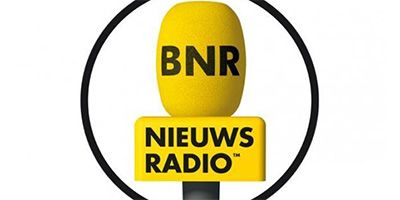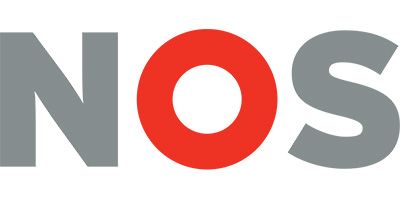
9 seconds.
That is how long it typically takes for a consumer to choose a product from the shelf.
In those 9 seconds, we don't have time to absorb all the product information. Out of perhaps 100 products within that category, our brain determines in that short time which product is worth it. It doesn't rationally weigh the pros and cons of each product but largely comes to a purchase decision automatically and unconsciously.
One of the most important factors in product choice is the packaging. It can ensure that your product stands out and prompts the shopper to place it in the shopping basket. Another important factor is, of course, pricing, but we cover that topic in another blog.
We previously wrote about the do’s and don’ts of good packaging. But how do you test if your packaging stands out on the shelf? And how do you know if your packaging encourages consumers to buy?
There is only one way to find out. Research. And since 4 out of 5 products introduced each year disappear from the shelf before the end of the year simply because they don't sell enough, conducting thorough packaging research is essential.
At Unravel, we regularly conduct packaging research for national and international brands. We objectively look at where choices are actually made: the brain. The goal is to predict and enhance the success of packaging in the different phases of the purchase process. Read more about Unravel’s packaging research.
The Best Method for Packaging Research
The design process for packaging usually goes through several steps. Often, several designs or prototypes are created first, and then it's time to gather feedback, after which the packaging is adjusted to eventually be produced in large quantities.
You typically obtain that feedback by conducting research. This can be done in various ways; from simple surveys to neuromarketing research. But which research method do you choose?
Because choices on the shelf are not made so rationally (researchers estimate that 95% of our choices are made unconsciously), traditional surveys often give a distorted view of reality. By asking for an opinion, you essentially take people out of that intuitive mindset and force them to think rationally about the packaging. And then they might suddenly notice a small claim on the packaging that gains a lot of value, or they might start thinking deeply about the font in which the product name is displayed on a package. Factors that are not rationally considered in a normal situation. Therefore, you measure something different than what you actually want to measure: the purchase motivation.
So how can you uncover that unconscious aspect and test the potential success of a packaging? This can be done through neuromarketing techniques. These measure the success of the packaging in the three steps of the choice process in an objective manner.
Before we delve deeper into those techniques, it's important to briefly highlight those three steps. We do this through the Three Steps to Purchase™ model. First, the packaging must stand out on the shelf. We call this Shelf Standout. Second, the packaging must be easily found when the shopper is looking for your brand or certain attributes your brand possesses, in other words: the packaging must be Findable. Third, the packaging must encourage purchase, which we call Purchase Activation.
Predict the Success of Your Packaging with Neuromarketing
Neuromarketing methods allow you to measure attention and choice processes as accurately and realistically as possible, enabling them to predict what the success in the store will be. The two most important tools we use from our neuromarketing toolkit for packaging research are Eye Tracking and EEG.
Eye Tracking
Sales begin with the battle for attention. Successful packaging attracts attention. With Eye Tracking, you measure exactly where the shopper looks. And you can see precisely which products first attract attention and which do not stand out. We measure the first steps of the Three Steps to Purchase model: Shelf Standout and Findability and brand recognition.
EEG
Standing out and brand recognition are, of course, one (and two), but the packaging must then also encourage purchase. Because your packaging can stand out as much as it wants; if it doesn't encourage purchase, it won't end up in the shopping basket. And thus, like 80% of all products, it will not be successful.
Purchase activation can be measured with EEG. With an EEG, you can measure desire, which turns out to be a good predictor of sales. Is the desire higher than the other options in the first few seconds? Good for you. The chances are high that the product will go home with the shopper. But is the desire lower? Then you can forget about that coveted spot in the shopper's cart. We also measure workload with EEG, which shows whether the packaging is easy or difficult to process in the brain.
Through these insights, you can test which variant of a new packaging scores best and will therefore lead to the most profit. Without neuromarketing packaging research, you wouldn't have had these insights. And by using neuromarketing, you significantly increase the chance of success. The packaging design is then no longer based on a gut feeling or the personal taste of the designer, but on the reaction in the consumer's brain.
An example report of such packaging research
You hopefully now have a better idea of what packaging research entails. But we can imagine that you would still like to know what such research looks like.
At Unravel, we regularly conduct packaging research for national and international brands. Unfortunately, we cannot share the research we conduct for our clients, but we do have an example report we can share. Click here to download the example report.
Three Neuro Tips to Make Your Packaging Stand Out More
About 70% of purchase decisions are made in the supermarket. This means that shoppers often base their choice on what stands out and attracts them in the store. Visual attention is very important in this, as it strongly correlates with sales. Simply looking at a product increases the likelihood that this product will actually be purchased (Gidlöf, Anikin, Lingonblad & Wallin, 2017). Therefore, it is important that your packaging attracts attention. You can achieve this, among other things, by:
Tip #1: Increase the Contrast
By increasing the contrast with the product category, your product stands out more. In a category where the dominant colour is blue, an orange packaging stands out and will automatically receive more attention.
It is important to know that context is very determining, and not every colour works equally well in every product category. From colour psychology, we know that we have all sorts of associations with colours. A contrasting colour may stand out more, but if it doesn't activate the desired associations in the shopper's brain, you might be better off choosing a slightly less contrasting colour that does evoke the desired associations in the shopper.
Tip #2: Use a Distinctive Shape
Distinctive packaging shapes also automatically stand out and arouse interest. So, see if you can use a shape that differs from the standard shape used in your product category.
Tip #3: Use Elements that Automatically Attract Attention
Some elements on a packaging automatically attract the shopper's attention. A few examples of these elements are:
- People: Especially (smiling) faces and babies do well, but something subtle like a hand holding the product can already ensure that your packaging attracts more attention.
- Animals: People generally love pets. Think of the Whiskas cat or the Page puppy; these animals not only ensure that the product gets more attention but often also make the product more attractive.
- Words: Certain words automatically draw attention to a packaging. A well-known word that grabs attention well is the word “Free”.
These tips were mainly about how you can attract more attention with your packaging. In our previous blog “The do’s and don’ts of good packaging” we also cover a number of tips to increase the attractiveness of your packaging.
Beware of Unexpected Effects
Various studies have been conducted on what works and what doesn't work on packaging. However, not every technique works well in every situation. For packaging, too, context is key. And so, one technique can double sales in a certain category, while in another shelf it can cause sales to halve. A good example of how a well-intentioned packaging claim can have an unexpected negative effect can be read in our blog “Why >15% less plastic can lead to 100% less sales”, where we update you on the boomerang effect.
Due to the significant influence that context can have on your packaging, it is always wise to research your packaging. At Unravel, we take that context into account in the research, with the aim of predicting and increasing the success of your packaging within the category.


 EN
EN  NL
NL 




